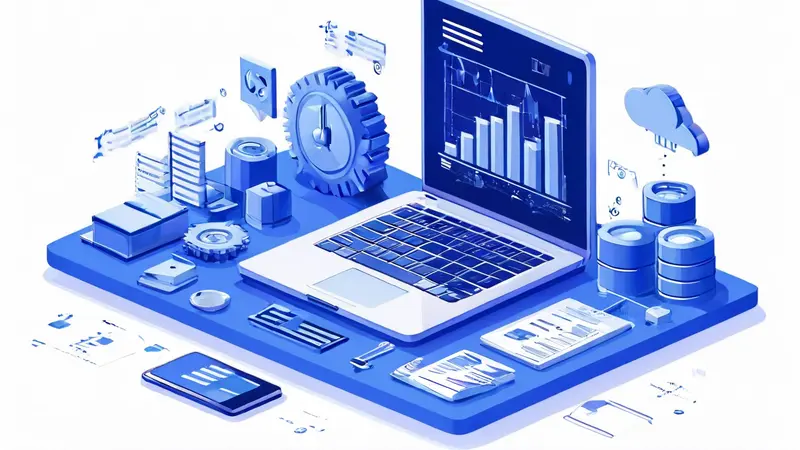Chips, ICs (integrated circuits) and semiconductors are the cornerstones of the modern electronics industry. The three are closely connected and jointly promote the rapid development of electronic technology. This article will explain the relationship between these three in a simple and easy-to-understand way, and explore their development history, application fields and future trends. The editor of Downcodes will take you to have a comprehensive understanding of chips, ICs and semiconductors, and reveal their important role in modern technology.

Chips, ICs (integrated circuits) and semiconductors are closely related concepts in the electronics industry, and they are very closely linked. A chip is the carrier of an integrated circuit, a silicon wafer containing an integrated circuit; an IC, or integrated circuit, is a technological achievement that integrates various components of a circuit; a semiconductor is the material basis for the production of integrated circuits because of its conductivity Between conductors and insulators, it is widely used in electronic devices.
Semiconductors are the cornerstone of electronic technology. If we compare it to a building, then integrated circuits are the basic bricks that make up the building, and chips are the specific bricks. The most critical property of semiconductor materials is to control the number and movement of electrons and holes, and achieve p-type or n-type through doping, thereby producing basic electronic components such as diodes and transistors.
Chips, also known as microchips, refer to tiny silicon wafers or other semiconductor materials that can perform specific electronic functions. They are ubiquitous core components in modern electronic devices. Chips are of great significance to the electronics industry because they are the basis for building miniaturized, high-performance and low-energy electronic devices.
Integrated Circuit (IC) is an indispensable element in modern electronic equipment. It realizes complex electronic circuit functions by integrating a large number of electronic components on a single semiconductor chip, greatly improving the performance and reliability of the circuit while reducing the size of electronic products.
Semiconductors are core materials for making electronic components. Their conductivity can be effectively controlled through temperature, impurity doping, and electrical property control. They are very suitable for use as switches or amplifiers.
With the advancement of science and technology, the fields of chips, ICs and semiconductors continue to develop and innovate. Future development trends will focus on further improving integration, reducing energy consumption, and enhancing performance.
Integrated circuits in the future will usher in a higher level of integration, and more electronic components can be integrated in a smaller space through advanced nano-manufacturing technology.
Reducing chip power consumption has always been the main goal of the semiconductor industry, which is related to the battery life of the device and the sustainable development of the environment.
As technology continues to advance, the boundaries between chips, ICs and semiconductors may become blurred, and they may be integrated into broader technical fields, such as quantum computing, bioelectronics, etc. At the same time, new semiconductor materials such as graphene are also being continuously studied. The discovery and application of these materials heralds that semiconductor technology will enter a new era. In the process of continuous development, the simultaneous improvement of all aspects involving electronic manufacturing, design and application will push the entire industry into the next innovation climax.
What is a chip?
A chip is the basic component of an integrated circuit (IC). Chips are usually made of silicon material and have hundreds of millions of tiny electronic components integrated on them, such as transistors, resistors, capacitors, etc. Chips are small, lightweight, high-performance and low-power consumption, and are widely used in the manufacturing of electronic equipment. It is one of the cores of modern electronic technology and can perform functions such as data processing, storage and transmission.
What is an IC?
IC is the abbreviation of Integrated Circuit. An IC is a circuit chip that integrates multiple electronic components (such as transistors, capacitors, resistors, etc.). The components within an IC are very small and can be manufactured using photolithography technology. IC can realize various functions, such as data processing, storage, amplification, transmission, etc. Its emergence makes electronic devices more compact, efficient, and consume less power. Therefore, the development of IC has had a huge impact on the electronic equipment industry in modern society.
What is a semiconductor?
A semiconductor is a material that has properties between conductors (such as metals) and insulators (such as rubber, wood). The conductivity of semiconductor materials is between that of conductors and insulators, and its conductive properties can be controlled by external factors such as temperature, electric field, and light. Common semiconductor materials include silicon, germanium, etc. Due to the characteristics of semiconductors, it is widely used in the manufacturing of electronic devices, such as transistors, photodiodes, solar cells, etc. The research and application of semiconductor materials is one of the keys to promoting the development of modern electronic technology.
I hope this article compiled by the editor of Downcodes will be helpful to you! In the future, chip, IC and semiconductor technologies will continue to make breakthroughs, bringing us a more intelligent and convenient life.